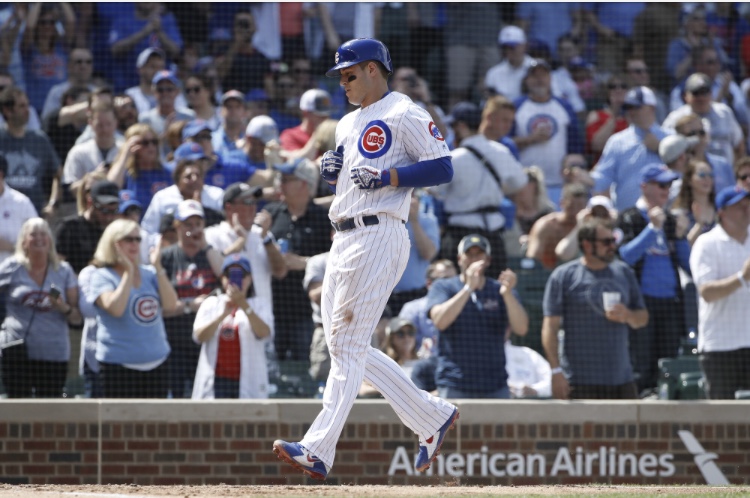The early numbers do not paint a pretty picture for Anthony Rizzo. His recent body language also doesn’t indicate too many positives for the Chicago Cubs’ cornerstone. But as frustration has mounted, and even continues after back-to-back games with home runs, there’s still very little to worry about in regard to the Cubs first sacker.
Rizzo’s early season line is an ugly one, to be sure. He’s hitting .171. He’s reaching base at a clip of only .269. His TAv to this point is a paltry .193. He’s posted an ISO of only .110. His wRC+ is hanging out at 57. This is all on the way to maintaining a negative WARP through his first 93 plate appearances this season, at -0.3. FanGraphs also has him on the negative side of the WAR picture, with an identical figure in that regard. As previously stated, his body language hasn’t been terrific, as there’s clear frustration from the lack of production from a first baseman that has very much been among the league’s elite since he spent his first full season on the North Side.
And yet, there doesn’t seem to be cause for a lot of concern. Rizzo has been extraordinarily unlucky, with a touch of health woes in there as well, given his short DL stint due to some back trouble. He’s continued to do much of what has made him wildly successful in his time with the Cubs, so there’s no reason to think that a massive turnaround is on the horizon, especially given the uptick in power we’ve seen from him in the past couple of games.
The first figure that stands out as to why Rizzo is currently experiencing such a dip in multiple statistical categories is his BABIP. Rizzo is only hitting .175 on balls that he puts into play this year. That’s brutal. The only qualifying position player in all of baseball with a worse number than that is Carlos Santana, at .163. And it’s not as if he’s slinging soft contact out there. Rizzo’s contact distribution looks much like it has in the past, in fact:
| Soft% | Hard% | LD% | GB% | FB% | Contact% | |
|---|---|---|---|---|---|---|
| 2016 | 16.7 | 34.3 | 20.3 | 38.4 | 41.3 | 80.3 |
| 2017 | 19.8 | 34.4 | 20.1 | 40.7 | 39.2 | 81.4 |
| 2018 | 13.6 | 33.3 | 20.0 | 38.5 | 41.5 | 85.0 |
That’s largely identical to the trends we’ve seen in the past, with that contact rate even up quite a bit. Not working in his favor is likely an even higher pull rate than normal, with a 48.5 percent mark that is almost a full four percent increase from last year. Nonetheless, this distribution largely indicates that Rizzo should just naturally see an increase in production across the board.
One spot that could stand to be shored up, on paper, is his walk rate. Rizzo is currently walking at a rate of only 4.3 percent, down from 13.2 percent last season as well as double digits in each of the four previous years. His pitches per plate appearance is at 3.65 currently, down from 3.94 P/PA last year (according to ESPN). Could frustration be a factor there? Probably not. His Swing% on pitches outside of the strike zone is actually down, as is his overall swing rate. His whiff rate is also down, currently sitting at only 6.8%, while his contact rate is up a touch. This is another figure that is likely to return somewhere resembling normalcy as the season wears on.
This is a player that has demonstrated as much consistency as any in all of baseball over the past few seasons. And he continues to do just about everything that he’s done in previous years. While there are probably some legitimate concerns over individual production and consistency elsewhere in this Cubs lineup, Anthony Rizzo probably shouldn’t be one of them. We’ve seen an awakening from him in the past couple games, and that could be just the spark he needs to showcase a return to form on the stat sheet.
We can only hope that the rest of the offense will follow suit.
Lead photo courtesy Kamil Krzaczynski—USA Today Sports
